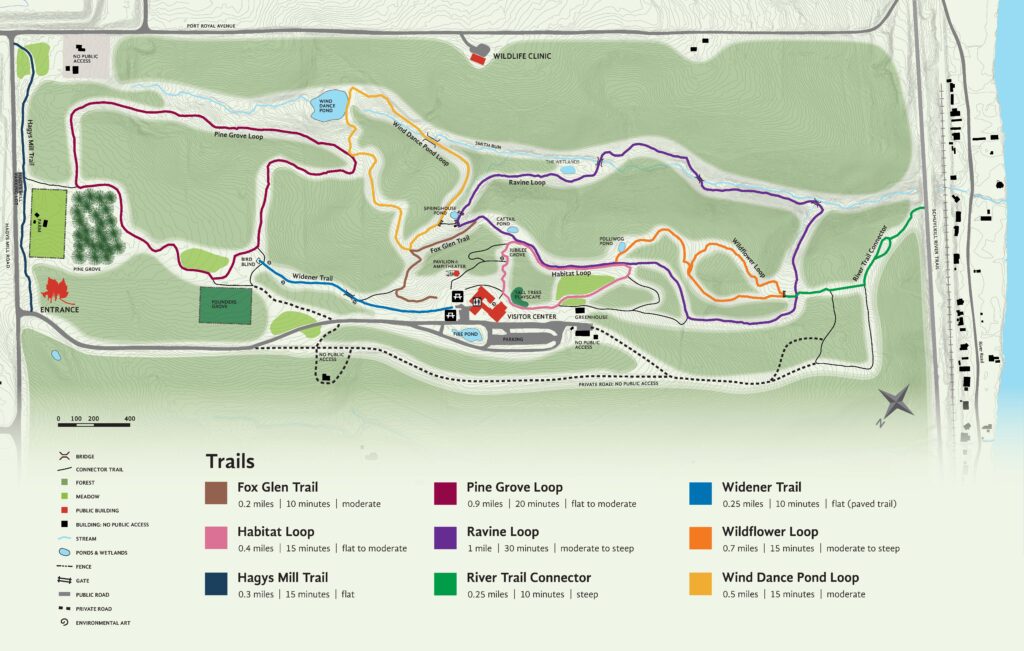Trails and Visitor Center
Visit the Schuylkill Center
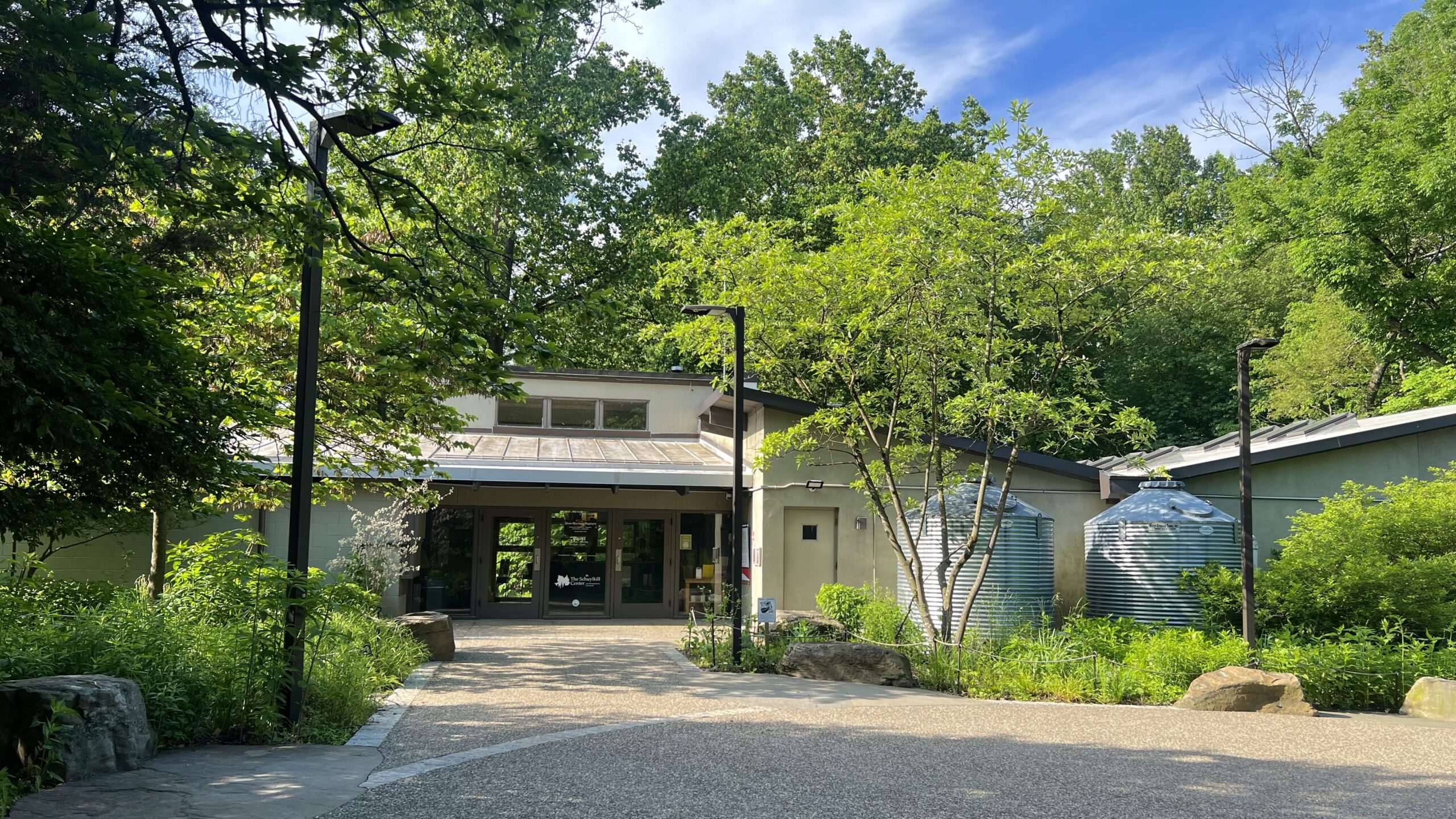
With 365 acres and more than three miles of trails, we welcome visitors to explore our forests and fields, ponds and streams. The trails are open daily from dawn till dusk. The Center’s grounds hold environmental art installations, the ADA accessible Widener trail, and ecological restoration sites. During the early spring the Wildflower loop explodes with native springtime ephemeral blooms. In the fall, the forest gives a spectacular autumn display. Located on the eastern side of the property is the Center’s wildlife clinic, which treats injured, orphaned, and sick wildlife. Click here for directions to visit the Center.
Download our trail map here or view it online below.
Visiting with a group? Click here to learn more about self-guided hikes.
Visitor Center
Visitor Center
The Visitor Center is the location of our main office, nature preschool, Discovery Center, Environmental Art Gallery, gift shop, and restrooms. The Visitors Center is open Monday through Saturday, 9am to 5pm.
Discovery Center
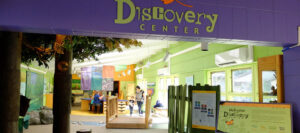
This interactive children’s exhibit allows visitors to explore what they will find on the trail before heading out for a hike. Children can test their knowledge about nature while having fun as they learn about honeybees, types of trees, how insects and animals use camouflage, and different bird calls.
Environmental Art Gallery
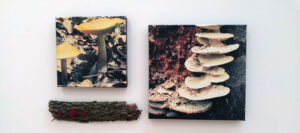
Located inside the Visitor Center, the indoor Environmental Art Gallery highlights changing exhibits and often complements outdoor sculpture installations. The Center exhibits between four to five shows annually, including local and regional artists as well as experienced and emerging ones. Click here for more information about the Center’s Environmental Art Program and any current exhibits.
Gift Shop
Visit our gift shop for snacks, gardening supplies, art from local artists, books, birdseed, and more!
Green Roof
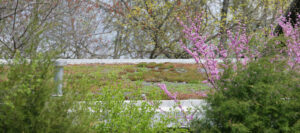
This vegetated roof system was installed in 2005 and provides a variety of benefits. Widely known for its ability to reduce stormwater runoff, the green roof also extends the life of our roof and provides wildlife habitat. With funding from the McLean Contributionship, the Center was able to retrofit a 2,215 square foot area of its roof with a 2 inch deep Flower Carpet green roof design by Roofscapes, Inc. Watch in the summer as the small purple flowers open each afternoon, bathing the green roof in a flush of magenta.
Sensory Garden
Our Sensory Garden, in the courtyard behind our visitor center, is planted with a carefully selected mix of native plants, designed to offer interesting sensory experiences throughout the year. Visitors can view the gardens from the large windows in the Discovery Center.
Solar Panels
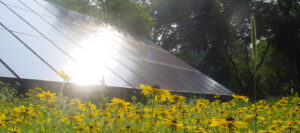
Our Solar PV Array is located directly adjacent to the visitor center front. The 10.2 kW system was installed by Mesa Environmental Sciences, Inc. in May 2006. The array reduces greenhouse gas emissions by a total of 24,759 pounds per year. This exhibit installation was made possible by the Pennsylvania Department of Environmental Protection’s Energy Harvest and the Sustainable Development Fund. The Solar PV Array is an excellent exhibit to visit for those interested in sustainable technology and is available for viewing year-round, depending on weather conditions.
Trails
Trails
As you explore our forests and meadows, keep your eyes out for plants, animals, art, and history. In the 1890s there were 14 homesteads here, farming this land. Search our forests for signs of them: stone walls, a springhouse, primroses, stone foundations, and daffodils are all signs that a home once stood nearby.
Fox Glen Trail (0.2 miles)
This short, steep trail connects to Wind Dance Pond Loop and Ravine Loop.
Habitat Loop (0.4 miles)
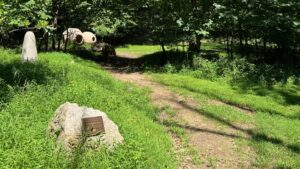
The Habitat Loop winds through a variety of habitats in a short time – meadow, woodland, and two ponds, both excellent spots to view to view freshwater aquatic insects, frogs, tadpoles, and dragonflies. Pass through Jubilee Grove, our 50th anniversary planting, and play in the Bird/Seed Shelter sculptures.
Hagys Mill Trail (0.3 miles)
This pedestrian trail parallels Hagys Mill Road from Port Royal to our main entrance. Pass through meadows, a grove of trembling aspen, and a hawthorne hedge.
Pine Grove Loop (0.9 miles)
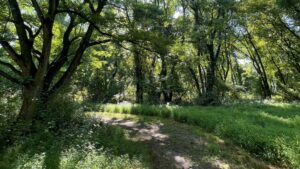
This trail winds through fields and wooded areas leading to Pine Grove. The trail passes Founder’s Grove, a memorial tree collection inside deer fencing. The trail connects to the bird blind at the end of the Widener trail.
Ravine Loop (1.0 miles)
This trail crosses a spring-fed stream, Smith Run, on several rustic bridges. This trail includes a few challenging slopes, where you will pass rock outcroppings and the Center’s oldest sections of forest. It is located by the wetlands, a marshy area where many native plants and freshwater creatures can be found.
Schuylkill River Trail Connector (0.25 miles)
This trail connected the Ravine Loop to the Schuylkill River Trail, passing through meadows and woodlands. The trail slopes steeply uphill from the Schuylkill River Trail before reaching the hilltop. A distant view of the Philadelphia skyline is visible from this trail on clear days in the winter and early spring.
Widener Trail (0.25 miles)
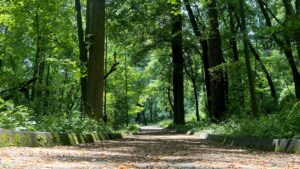
This is an ADA accessible, paved trail leads through forest to bird blind. Midway along the trail is a wooden deck and seating area. The bird blind offers an opportunity for visitors to observe the interaction of birds at the feeders without disturbing them. Feeders are filled year-round so you can observe local and migrating birds.
Wildflower Loop (0.75 miles)
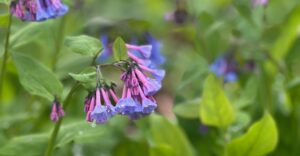
Pick up this trail at the gate by Polliwog pond, follow the natural stone steps to the far end, and loop around again.
Wind Dance Pond Loop (0.5 miles)
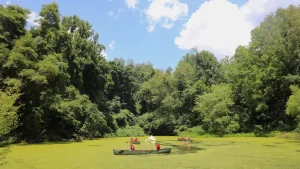
This trail leads to our largest pond, where, in the nesting season, there may be mallards or Canada geese. Little green and great blue herons are frequent visitors. The trail passes through a mature stand of beech trees.
Features
Tall Trees Nature Playscape (Currently closed for renovations.)
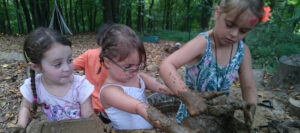
Dig in the sand pit, cook in the mud kitchen, hunt for treasures hidden among the stones, and more in this unique nature-based play area.
This feature is currently closed for renovations. Please pardon our appearance as we make improvements to the playscape.
Pavilion & Amphitheater
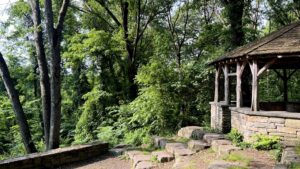
Located off of the Gray Fox Loop, the Pavilion and Amphitheater overlooks Springhouse Pond. The Amphitheater is constructed from local Wissahickon schist and includes seating for up to 125 people.
Wetlands & Ponds
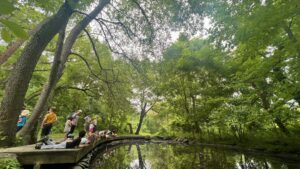
Our property is home to five ponds and two wetlands, all built to encourage biodiversity and provide educational sites. Wind Dance most closely resembles a natural pond, while Cattail Pond’s platforms make it a favorite; Springhouse Pond connects to a natural spring within the adjacent 19th century springhouse.
Widener Trail

At the end of the Center’s only paved trail, the bird blind offers an opportunity for visitors to observe birds at the feeders without disturbing them. The trail passes several environmental art installations.
Wind Dance Pond
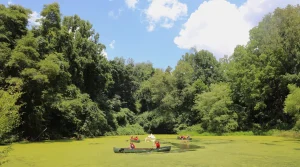
Wind Dance, the largest of the Center’s ponds, was named for the wind rippling across its waters. Filled with fish, frogs, turtles and invertebrates this pond offers an abundance of food and cover for wildlife. Since its creation in 1967, the pond has never been stocked, but birds have carried fish and frog eggs on their legs and feathers, bringing inhabitants to a new home!
Pine Grove
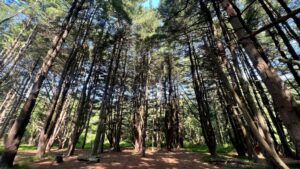
Planted in the early 1970’s, the White and Virginia pine offer cover and forage for wildlife. White pines commonly grow among deciduous trees and Virginia pine more commonly in barrens, open slopes and ridge tops. Pine Grove is a place for quiet reflection, an outdoor classroom, and a beloved fort-building site for kids.
Jubilee Grove
Established in 2015 in honor of our 50th anniversary, Jubilee Grove celebrates our community with native plantings, a sculpture by Binney Meigs, and a time capsule to be opened in 2040.
Environmental Art
Environmental Art
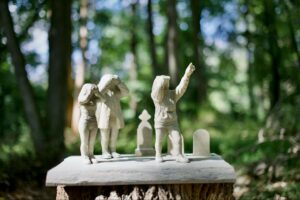
Our outdoor Environmental Art offers visitors a unique way to connect with nature using the creativity of artists to inspire and reveal a different way of seeing nature. Our program gives artists the opportunity to explore and experiment with ecological processes and challenges both locally and globally.
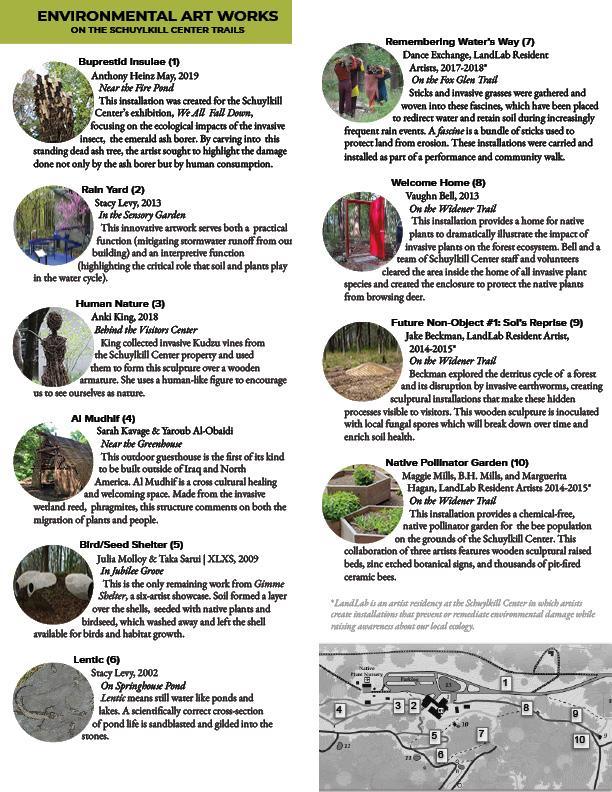
Rain Yard
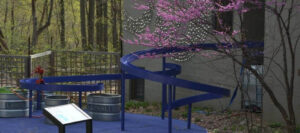
An interactive artwork in our Sensory Garden, Stacy Levy’s Rain Yard was installed in 2013. This innovative artwork serves both a practical function–mitigating stormwater runoff from our building–and an interpretive function–highlighting the critical role that soil and plants play in the water cycle.
Every time we get 1 inch of rain, RainYard captures and slows over 3,000 gallons of water. With the average of 40 inches of rain Philadelphia gets per year, it captures and slows nearly 100,000 gallons.
